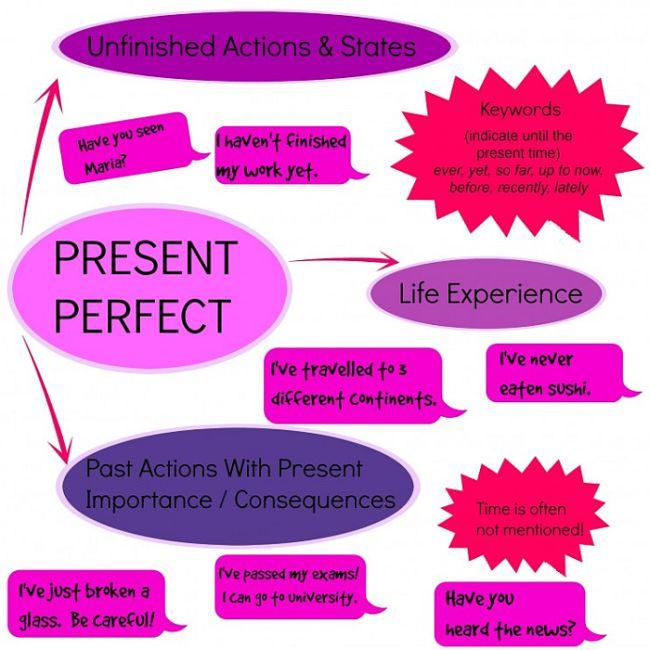FORM
Basic Form: Subject + Helping (Auxiliary) verb ‘to have’ + Past Participle
Question Form: Helping verb (Auxiliary) + Subject + Past Participle
Negative Form: Subject + helping verb + not + Past Participle
USE THE PRESENT PERFECT TO DESCRIBE:
- an action that began in past continues in present – I have been in Malta for 3 months.
- a past / finished action that has present importance – I have just broken a glass.
- to describe past life experiences- I have been to Mexico.
- an action happened at an indefinite or unspecified time in the past – I have never had an operation.
|
PRESENT PERFECT FORM |
|||||
| Person | Regular Verb | Irregular Verb | Negative Long Form | Negative Short Form | |
|
have or has & Past Participle (base of verb +ed) |
have or has + Past participle |
have/has not + Past Participle |
haven’t/hasn’t + Past Participle |
||
| I | have played | have eaten | have not eaten | haven’t played | |
| You | have played | have eaten | have not eaten | haven’t played | |
| He/She/It | has played | has eaten | has not eaten | hasn’t played | |
| We | have played | have eaten | have not eaten | haven’t played | |
| You | have played | have eaten | have not eaten | haven’t played | |
| They | have played | have eaten | have not eaten | haven’t played | |
Check your knowledge with this quiz exercise:
|
PRESENT PERFECT QUESTION FORM |
|||||
| Question Word | Helping Verb | Subject | Past Participle |
||
| What | have | I | done | today? | |
| Where | have | you | written | your homework? | |
| Why | has | she/he/it | worked | today? | |
| Who | have | we | visited | this week? | |
| When | have | you | tried | to find the answer? | |
| How long | have | they | known | about the plan? | |
For teaching tips and more about the present perfect click here.

